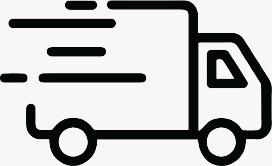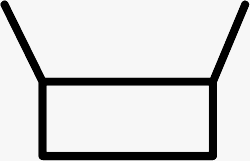The future of fashion is sustainability. Already, 78% of consumers now prioritize a sustainable lifestyle, while 30% actively seek out eco-friendly products for their purchases. This shift shows a growing embrace of sustainability practices.
As we find ourselves reviewing our consumption habits. How can we minimize the amount of waste we generate?
From fashion to home decor and everyday products, the terms "upcycling" and "recycling" have become sustainability slang.
But what is upcycling vs recycling? How do these practices differ? Can both really inspire creativity, promote sustainability, and save money in the process? Let's find out.
What Does Recycle Mean in Fashion?
Recycling involves the collection and reprocessing of waste materials to create fresh, raw materials. Think plastic bottles and shipping boxes we often see in curbside recycling bins. They're broken down, melted, and converted into plastic pellets and fibers to produce new containers.
Currently, a staggering amount of textile waste–92 million tons, to be precise–hits landfills every year. And only 1% of this number undergoes recycling.
This can go up if fashion companies do their part. Recycling applies to both final products and loose materials. Finding a secondary use for the finished goods gives them new life. Waste materials, such as used textiles, can be reused or repurposed to help manufacture other goods.
What Does Upcycle Mean?
The word "upcycle" is like recycling's more innovative cousin. Upcycling takes discarded items and gives them a makeover, repurposing them into something of higher value.
It's like finding your oldest blouse and changing it into a chic crop top. You keep your upcycled item out of the landfill and save the resources that would have been used for new textiles.
Upcycling reduces waste and empowers us to make a statement through our choices. In fact, reusing a kilogram of clothing can save 25 kg of CO2 emissions. This emphasizes the undeniable importance of upcycling products, especially in the face of fast fashion's throwaway culture.
Main Difference Between "Upcycle" and "Recycle"
The upcycle vs recycle debate shows the differences in their methods and outcomes. They're both champions of sustainability, but here's how they differ.
The recycling process focuses on breaking down materials and producing new ones. Upcycling takes a more creative route. The latter breathes new life into items without a complete overhaul.
Recycling, although commendable for its waste-reducing efforts, relies on energy-intensive industrial processes. Sorting, cleaning, and converting materials into new ones require significant energy inputs and contribute to overall energy consumption.
In contrast, upcycling takes a more energy-efficient approach. It leverages creativity and resourcefulness to utilize what's already available, minimizing the need for energy-intensive machinery.
Think of recycling as a factory worker and upcycling as an artsy designer. They work together to make the world a greener and safer place.
HYER GOODS' Sustainable Fashion Advocacy
Recycling and upcycling offer innovative solutions to reduce waste and conserve resources. Every small step counts, whether you do one or another.
At HYER GOODS, we turn wasted leather into exquisite, premium-quality bags and accessories. We salvage and repurpose deadstock cotton canvas, leather, merino wool, and luxury leftovers, preserving their inherent beauty.
It's about time to make eco-conscious fashion choices. Let's upcycle and recycle with style and quality in mind. Shop from our sustainable fashion bag lines today.







Leave a comment